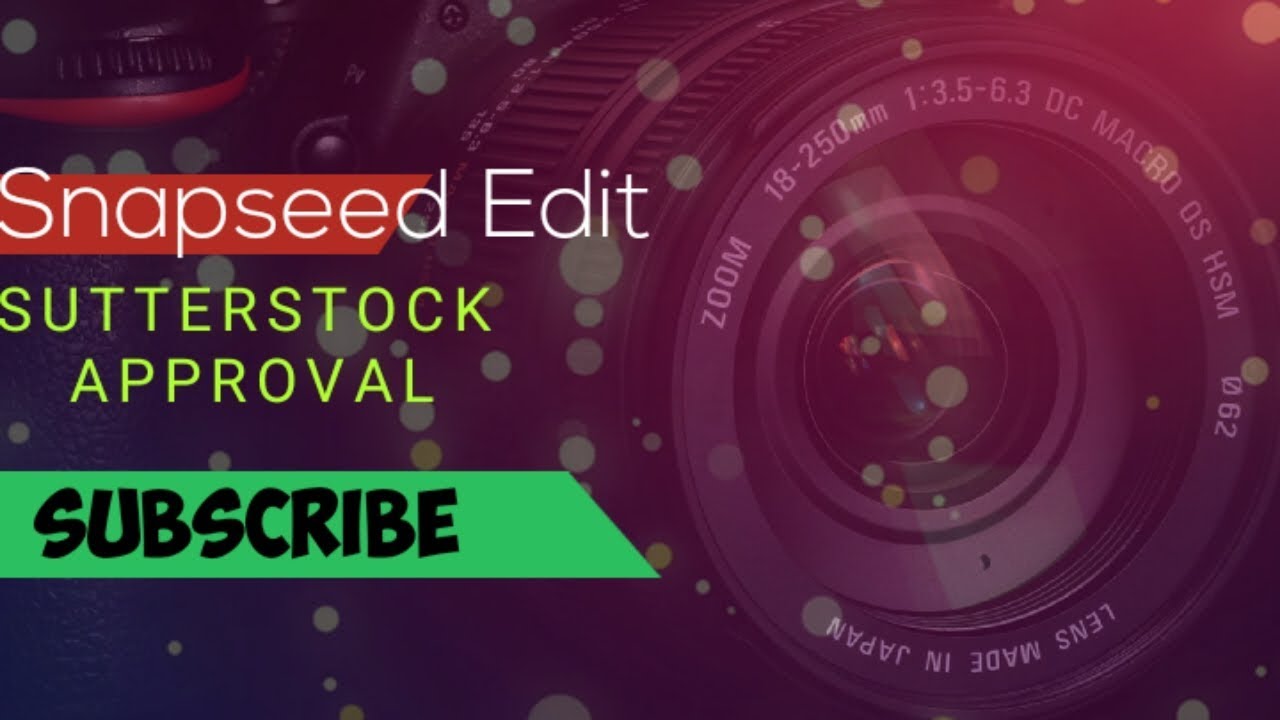If you’re looking to get your photos approved and published on Shutterstock, the first step is understanding their submission guidelines. Shutterstock has specific standards to ensure that all images meet their quality and legal requirements, which helps maintain a high standard for their entire collection. Ignoring these guidelines can result in your images being rejected, so it’s worth taking the time to learn what they expect.
Shutterstock‘s guidelines cover various aspects, including technical specifications, content restrictions, and model releases. Here’s a quick rundown:
- Image Quality: Photos must be high-resolution (at least 4 MP), sharp, and well-exposed. Avoid blurry, pixelated, or noisy images.
- Composition: Focus on clean, well-composed shots with a clear subject. Cropped images or those with distracting backgrounds often get rejected.
- Content Restrictions: Avoid images with copyrighted logos, trademarks, or recognizable private property unless you have permission. Also, steer clear of offensive, violent, or illegal content.
- Metadata and Keywords: Properly tag your images with relevant keywords and descriptions. Accurate metadata helps reviewers understand and categorize your work better.
- Legal Releases: For images featuring recognizable people or private property, model or property releases are mandatory. Without them, Shutterstock won’t approve your photos.
It’s also important to review Shutterstock’s detailed submission policies on their website regularly, as guidelines can evolve. Staying informed ensures your images are aligned with their current standards, increasing your chances for approval and sales.
Preparing Your Photos for Submission

Once you understand Shutterstock’s guidelines, the next step is preparing your photos to meet those standards. Proper preparation can make the review process smoother and boost your chances of approval. Here are some practical tips to get your images submission-ready:
1. Choose Your Best Shots: Select images that are sharp, well-lit, and showcase a strong focal point. Avoid photos with distractions or poor composition. Think about what makes your shot stand out and ensure it’s visually compelling.
2. Edit for Quality and Consistency: Use photo editing software like Adobe Lightroom or Photoshop to adjust exposure, contrast, and color balance. Remove any minor imperfections, such as dust spots or blemishes, but keep edits natural—over-editing can sometimes harm approval chances.
3. Resize and Format Correctly: Upload images in high-quality JPEG format, with a minimum of 4 MP resolution. Ensure the image dimensions meet Shutterstock’s specifications (generally at least 4,000 pixels on the longest side). Save files with descriptive filenames that include relevant keywords.
4. Remove Watermarks and Logos: Only submit images that are free of watermarks, logos, or branding unless they are your own and you have rights to sell them. Watermarked images will be rejected.
5. Add Metadata Carefully: Fill out the title, description, and keywords accurately and thoughtfully. Use relevant keywords that describe the subject, mood, colors, and context. This improves discoverability and categorization.
6. Obtain Necessary Releases: If your photos feature recognizable people, private property, or trademarks, secure model and property releases beforehand. Scan and save them in digital format for submission, as Shutterstock requires these documents for approval.
By taking these steps, you ensure your photos are polished and compliant, making the submission process much smoother. Remember, quality, relevance, and legal compliance are key to getting your images approved and making a splash on Shutterstock!
Essential Editing Tips to Enhance Photo Quality
So, you’ve taken some stunning photos and are eager to upload them to Shutterstock. But before you hit that submit button, a little editing can make a huge difference in ensuring your images meet the platform’s high standards. Let’s talk about some essential editing tips that will help your photos stand out and get approved.
1. Focus on Clarity and Sharpness
First things first — clarity is key! Make sure your main subject is crisp and in focus. Use sharpening tools wisely to enhance details without making the image look unnatural. Remember, over-sharpening can introduce noise and artifacts, which Shutterstock reviewers dislike.
2. Correct Exposure and Brightness
Proper exposure ensures your photo isn’t too dark or too bright. Adjust the exposure, contrast, and brightness levels to bring out the details in both shadows and highlights. A well-balanced exposure makes your image more appealing and easier to evaluate.
3. Color Correction and Balance
Vibrant colors attract viewers, but they should look natural. Use color correction tools to fix any color casts or inaccuracies. Adjust saturation carefully — too much can look unnatural, and too little can make your photo dull. Aim for a balanced, lively palette that enhances the scene.
4. Cropping and Composition
Good composition is vital. Crop your image to eliminate distractions and focus on the main subject. Follow the rule of thirds or other composition principles to create a balanced and engaging frame. Remember, Shutterstock favors images with strong visual impact and clear focal points.
5. Remove Distractions and Imperfections
Use cloning or healing tools to eliminate unwanted objects, blemishes, or dust spots. A clean, polished look shows professionalism and increases your chances of approval. Just be careful not to over-edit, as natural-looking images are preferred.
In a nutshell, these editing steps can significantly boost your photo’s quality. Take your time, review your edits, and compare your image before and after to ensure it looks natural and eye-catching. High-quality, well-edited photos are more likely to get approved and sell well on Shutterstock!
Avoiding Common Editing Mistakes That Lead to Rejection
Even the most talented photographers can fall into some common editing pitfalls that may cause their images to be rejected by Shutterstock. Knowing these mistakes can help you avoid them and streamline your submission process.
1. Over-Editing or Excessive Filters
While enhancing your photo is great, overdoing it can make your image look artificial. Avoid heavy filters, extreme contrast, or exaggerated saturation that distort the natural appearance of your scene. Shutterstock prefers realistic, true-to-life images.
2. Ignoring Technical Quality
Low resolution, pixelation, noise, or poor lighting are common reasons for rejection. Always start with high-resolution images and use noise reduction tools if necessary. Make sure your edits don’t compromise the technical quality of the photo.
3. Clipping or Unnatural Edits
Be cautious with object removal or background changes. Unnatural edges, mismatched lighting, or inconsistent shadows can make your edits obvious and unprofessional. Use masking and blending techniques to keep edits seamless and natural-looking.
4. Not Maintaining a Consistent Style
If you’re editing a series of photos, ensure your style remains consistent. Disparate edits can make your portfolio look amateurish and decrease the chances of approval. Develop a subtle, natural editing style that enhances your images without overpowering them.
5. Forgetting to Check Image Metadata and Compliance
Ensure your edited image still meets Shutterstock’s technical specifications: correct color profile (sRGB), appropriate file formats, and no embedded watermarks or logos. Failing to comply can lead to rejection regardless of editing quality.
By being aware of these common mistakes and actively avoiding them, you’ll increase your chances of getting your photos approved smoothly. Remember, subtlety and quality are your best friends when editing for Shutterstock. Keep your edits natural, and your images will shine!
Using Editing Software Effectively for Shutterstock Photos
Once you’ve captured your beautiful shot, editing is where the magic truly happens. But it’s not just about making your photo look good — it’s about making it meet Shutterstock’s standards so it gets approved quickly. So, how do you use editing software effectively? Let’s break it down.
First, choose the right software. Popular options include Adobe Lightroom, Photoshop, Capture One, and even free tools like GIMP or Darktable. The key is to be comfortable with your chosen tool so you can make precise adjustments without overdoing it.
Here are some tips to ensure your edits enhance your photo without crossing the line into unnatural territory:
- Adjust exposure and contrast to ensure your image isn’t too dark or too bright. Aim for a natural look that reflects real-life lighting.
- Correct color balance. Make sure whites are truly white and colors are vibrant but not oversaturated. Use the white balance tool to fix any color casts.
- Sharpen selectively. Sharpen the main subject rather than the entire image to keep it looking crisp without noise or halos.
- Remove distractions. Use healing brushes or clone tools to eliminate dust spots, blemishes, or other unwanted elements.
- Maintain realism. Avoid excessive filters or stylized edits unless it fits a specific niche. Shutterstock favors natural, high-quality images.
Another tip is to work non-destructively whenever possible. Use adjustment layers or virtual copies so you can revert changes if needed. This way, you keep your original photo intact — a good habit that saves headaches later.
Lastly, pay attention to image resolution and file format. Shutterstock prefers high-resolution images (at least 4 MP, but higher is better), in JPEG format with minimal compression. Keep the file size manageable but ensure quality isn’t compromised.
Remember, effective editing isn’t about making your photo look artificially perfect. It’s about enhancing its natural appeal, ensuring it meets Shutterstock’s quality standards, and standing out in a crowded marketplace.
Final Checks Before Submitting Your Photos
Before you hit the submit button, take a moment for some crucial final checks. This step can make all the difference between a smooth approval process and unnecessary rejection. Think of it as your last quality control before sharing your work with the world.
Here’s a handy checklist to run through:
- Resolution and Quality: Confirm your image resolution meets Shutterstock’s minimum requirements. Ensure the photo is sharp and not pixelated or blurry.
- File Format: Save your image as a high-quality JPEG, with appropriate compression. Avoid TIFF or PNG unless explicitly required.
- Color Profile: Embed the sRGB color profile. Shutterstock prefers images in sRGB for consistency across devices.
- Metadata Accuracy: Double-check your keywords, titles, and descriptions. Use relevant, descriptive tags to help buyers find your image. Avoid overstuffing or irrelevant tags.
- Model and Property Releases: Ensure you have the necessary releases for any recognizable people or private property in your photo. Upload the release forms if required.
- Image Composition: Review the overall composition. Is the main subject centered or positioned according to the rule of thirds? Is there any distracting element that slipped through editing?
- Color and Exposure: Make sure the exposure is balanced, and colors look natural. Use your editing software to verify this one last time.
- Watermarks and Logos: If your image contains any watermarks or logos, remove them unless they are part of the composition and allowed by Shutterstock’s guidelines.
Before uploading, do a quick visual scan to catch anything you might have missed. Sometimes, stepping away for a few minutes and returning with fresh eyes helps catch errors or issues. Also, consider viewing your image on different screens or devices to ensure it looks good everywhere.
Remember, submitting high-quality, well-prepared images increases your chances of approval and helps build your reputation as a reliable contributor. Taking these final steps might seem small, but they’re essential for turning a good shot into a Shutterstock-approved masterpiece!
Additional Resources for Successful Photo Editing and Submission
To enhance your chances of getting your photos approved on Shutterstock, leveraging the right resources can make a significant difference. Here are some valuable tools and references to support your editing process:
- Shutterstock Contributor Guidelines: This official resource offers detailed specifications on image quality, composition, and technical requirements. Familiarizing yourself with these guidelines ensures your submissions meet platform standards.
- Photo Editing Software Tutorials: Platforms like Adobe Photoshop, Lightroom, and GIMP provide comprehensive tutorials to help refine your editing skills. Investing time in learning these tools can elevate your image quality.
- Stock Photography Trends and Inspiration: Websites such as Unsplash, Pexels, and Behance showcase trending styles and high-quality images. Analyzing these can inspire your own work and help you understand current market demands.
- Color Correction and Enhancement Guides: Proper color grading can make your images more appealing. Resources like KelbyOne or Lynda offer courses dedicated to color correction techniques.
- Metadata and Keywording Resources: Using accurate keywords improves your image discoverability. Tools like Adobe Bridge or Shutterstock’s own keyword suggestions can assist in effective tagging.
Additionally, joining online communities and forums dedicated to stock photography, such as Shutterstock Contributor Forums or photography groups on social media, can provide feedback, tips, and support from experienced contributors. Continually updating your knowledge and skills through these resources will significantly increase your chances of approval and success on Shutterstock.
By utilizing these tools and staying informed about industry standards, you’ll be well-equipped to produce high-quality, compliant photos that stand out and get approved quickly.


